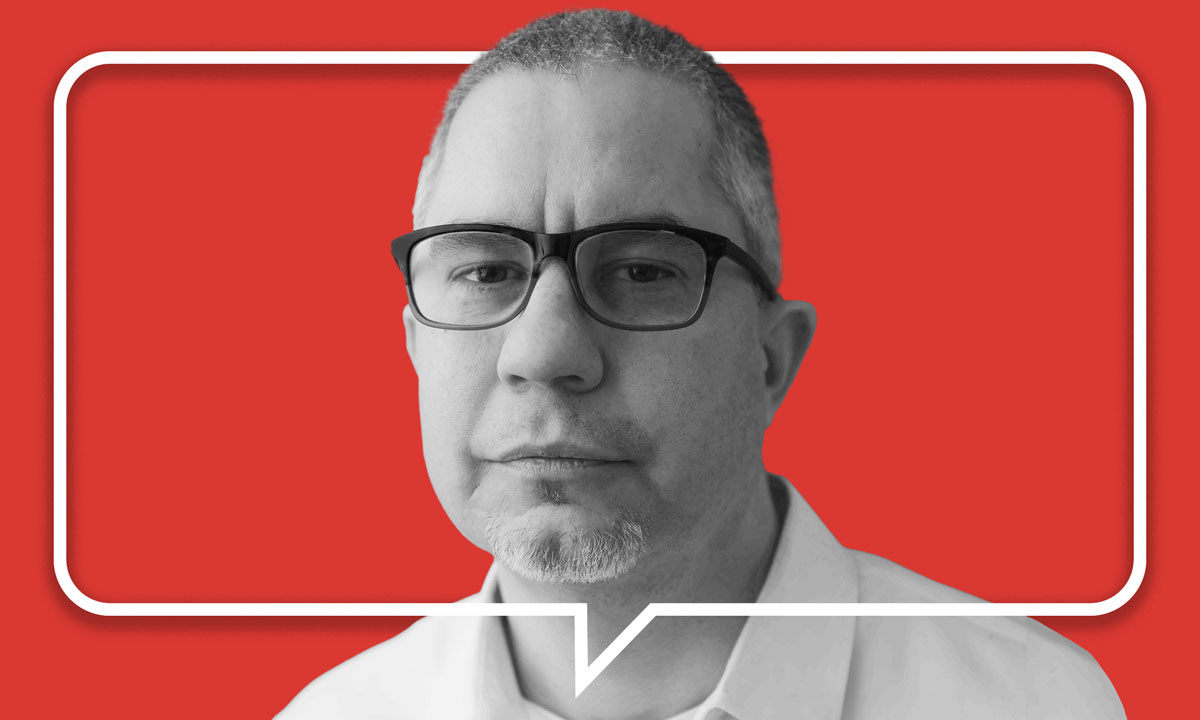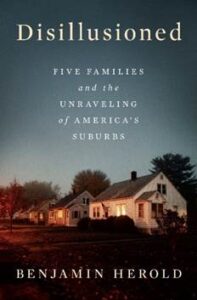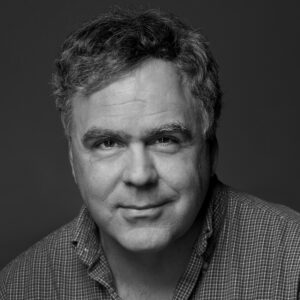In New Book, Diverse Families Find Broken Schools, Broken Dreams in the ‘Burbs
Education journalist Ben Herold writes in Disillusioned of a suburban American dream that has proven elusive for families of color.

Get stories like this delivered straight to your inbox. Sign up for The 74 Newsletter
The post-World War II growth and massive government subsidization of America’s suburbs is an often-told tale. But in his new book Disillusioned, education journalist Benjamin Herold offers a grim, cautionary afterword for the 21st Century.
Staring down the nearly 80-year history of modern suburbia, Herold finds that the effort produced mostly “disposable communities” across the country. While they served their first few sets of residents — his family included — they have failed to deliver the promise of the American Dream to the families of color who followed. Case in point: He notes that in the Lovejoy Independent School District north of Dallas, where his reporting takes him, Black mortgage loan applications are now denied at a rate 23 percentage points higher than those of white applicants with similar incomes.
And while many families sought suburban homes in large part for their superior schools, even that isn’t a given anymore, he finds — especially if you’re not white or born in the U.S.A. Instead of an educational upgrade, he reports, many families now find troubled, underfunded schools, intractable bureaucracies, teachers’ union contracts that make “any wholesale changes difficult” and, perhaps worst of all, maddening discrimination in the very place where they’d sought refuge.
A longtime Education Week staffer who now teaches journalism at Temple University, Herold spent four years examining the historical record and found a pattern: As suburbs age, municipal revenues often fall, even as the costs of maintaining infrastructure rise. An “entrenched culture of political backscratching and can-kicking” exacerbates these problems.

In one suburban district in Evanston, Ill., outside of Chicago, crusading superintendent Paul Goren tells Herold, “I landed in a district that had a foundation of quicksand. It was wobbly on the instructional side, with lots of people doing their own thing because that was what they had done for years. We were [also] facing some level of financial doom.”
Eventually, Herold writes, what befell so many suburbs was what he calls a “relentless cycle of racialized development and decline that took root after World War II, then sucked huge swaths of the country into a pattern of slash-and-burn development that functioned like a Ponzi scheme.”
His book, out Tuesday, follows five diverse families in suburban Atlanta, Chicago, Dallas, Los Angeles and Pittsburgh. He actually grew up in the Penn Hills neighborhood east of Pittsburgh, and finds one of his subjects just three doors down from his childhood home.
Herold spent years getting to know these families, offering a deeply reported and closely observed account of five families’ struggles to capture what his family so easily enjoyed.
The 74’s Greg Toppo caught up with Herold earlier this month.
This interview has been lightly edited for length and clarity.
The 74: You note at the outset that you’re a suburban kid, raised in Penn Hills. Things for you went as they were supposed to. Yet you report that your dad ended up selling your childhood home in 2014 for one-fourth of what it was worth, to a guy he met on Craigslist. Is this the inevitable fate of inner-ring suburbs like yours? What’s at play here? Why don’t suburbs work anymore, and how do public schools play a part in this failure?
Benjamin Herold: Suburbia worked great for my middle-class white family and millions of others like us who received guaranteed mortgage loans, massive tax breaks and sparkling new infrastructure, including public schools we got decades to mold in our own image. But all that was made possible by trading short-term wealth for massive debts and liabilities that we pushed off on to future generations. Eventually, the bills come due. That’s what we’re seeing now.
You write that America’s suburbs since World War II have resembled a kind of Ponzi scheme that has stuck later investors with the bill. So we’re in the “after” part of the cycle, right?
All too often, it’s newer suburban families of color who get stuck paying for all the opportunity that whiter and wealthier families like mine already extracted. Because this cycle plays out over large geographies and multiple generations, it can be difficult to recognize when we take snapshots of a single suburban community at a single point in time. That’s why I followed five families living in five suburban communities that are each at a different stage of this process.
It’s also why public schools are such a valuable lens — we can only really see the bigger picture when we pay close attention to the anger, frustration and disillusionment that so many suburban parents feel when they’ve done everything right, yet still have to deal with their children being called racial slurs, subjected to unfair discipline and denied access to opportunities like gifted programs.
Just three doors down from your old house in Penn Hills, you knock on a door and find one of your five subjects: Bethany Smith, a Black woman who bought the place with her mother. That Bethany’s experience is so different from your family’s seems to reveal what you’re getting at in the book. Tell us about her. [Note: Herold uses pseudonyms for all of his subjects with the exception of Smith, who writes the book’s epilogue.]
Bethany’s family and mine wanted the same things: a quiet street, good public schools, homes that steadily increase in value, systems and services that just work. The difference is that my white family got most of those things without paying full price, while Bethany’s family had to pay extra to receive declining services, a school district that was raising taxes and slashing services and a stagnant housing market.
Your subjects — almost all of whom are people of color — seem in many ways left to their own devices when it comes to pursuing these dreams in mostly crumbling, formerly white suburbs. What should communities be doing differently to help these families?
That’s the wrong question. Here’s why: In suburban Atlanta, I followed a middle-class Black family named the Robinsons. Both parents have advanced degrees, good jobs, rich social networks, and a strong spiritual foundation. Both also unabashedly love learning. Nika, the mom, was pursuing her PhD in public health, and Anthony, the dad, was a network engineer and former middle school teacher who stayed up late each night re-teaching geometry concepts to his teen son. Both parents were extremely active in their children’s schools, volunteering in the library, going to every parent-teacher meeting and maintaining running email correspondence with their kids’ teachers. And both Nika and Anthony are extremely kind and funny to boot. So for me, the question becomes: How on earth does a well-regarded system like the Gwinnett County Public Schools not only fail to connect with a family like the Robinsons, but actively alienate them, by gradually whittling away their oldest son’s spirit, joy, and sense of self, despite the abundant resources, assets and gifts the Robinsons bring with them?
So how can we understand the Robinsons’ experience through your lens of suburban decline instead of incompetence at the school level?
By 2019, Gwinnett County was nearly two-thirds Black, Hispanic, Asian, and multiracial. But in many ways, the Gwinnett County Public Schools operated as if it were still the early 1990s, when the population it served was still 90 percent white. During the period I write about, this was evident in big racial disparities in school discipline and access to gifted programs; Black and brown children now made up about two-thirds of all the district’s students, but barely one-third of the kids the district identified as gifted and talented.
Above all, though, this dynamic was evident in the district’s leadership. Prior to 2018, Gwinnett had somehow never elected a person of color to its five-member school board, which was largely controlled by three older white women, one of whom had held her seat for 47 years, and all of whom were vocal in their beliefs that changing the way things had always been in order to reflect the priorities and values of a changing population was tantamount to diluting the quality of the education the district offered. There was plenty of incompetence, but it occurred within the larger context of a $2.3 billion organization with policies, practices, and personnel that too often showed flagrant disregard for the majority of families it served.
Eventually, things start to fall apart for nearly all of your subjects, it seems. Even the Beckers, a conservative and affluent white family, ultimately give up on the public schools in their exclusive Dallas exurb after a single year. They end up in a private Christian academy in a Plano strip mall. That makes me wonder: Is at least some of the “unraveling” you’re describing just the messiness of life, parent restlessness writ large?
I approached writing Disillusioned from two angles. I wanted to illuminate a big economic, social, and political pattern that we all now live within because America is such a suburban nation. I also wanted to explore the choices everyday families make and the lives we build as we try to figure out our relationship to that pattern. So I don’t think the Beckers’ relentless search for better schools is separate or distinct from the cycle of suburban churn they’re trying to navigate. As with the rest of us, these larger forces help determine the available options, and the choices we make in turn help shape those larger forces.
You note throughout the book that Black and brown students have always had a fraught relationship with their suburban schools: “For so long,” you write, “so much of suburbia had been organized around trying first to keep those kids out, then treating them as a problem to be managed.” Yet in Compton, Calif., which is now almost entirely Black and brown, you find a measure of promise. Can you say more?
Jefferson Elementary in Compton is housed in a ramshackle facility consisting of several rundown bungalow buildings with narrow slits for windows that are almost reminiscent of a prison. But what I saw inside Jefferson and Compton Unified was a multiracial collection of adults — including a Black superintendent and school board chair, a Filipino principal, and a Latino fourth-grade teacher whose classroom I followed — who were unflagging in their belief that Compton’s children were bursting with talent and deserved all the opportunities and supports the system could muster.
One of my favorite little examples of this was a narrative essay the fourth-graders were asked to write. The kids had to describe what a typical day would look like if they worked at LucasFilm. A boy named Jacob, whose family I was following, wrote this incredible piece about designing new droids and prototyping new light sabers and having water-cooler conversations with George Lucas. Between assignments like that, after-school robotics clubs, the chance to create a class newspaper, engineering lessons through Project Lead the Way [a well-regarded STEM-focused curriculum], and a class-wide mock trial, the kids were flooded with opportunities to imagine themselves shaping America’s future. And Superintendent Darin Brawley was extremely intentional about this, at a very big-picture level — he recognized that his retirement and his own family’s progress would depend on how well he prepared the students in Compton Unified, and so he took that responsibility not just seriously, but personally.
Your idea to pay Bethany Smith, the Penn Hills mom, to write the book’s epilogue strikes me as a bold choice. She’s quite blunt, for the record, writing that white people “are always fucking some shit up, then expecting everybody else to go fix it.” Why, among all of your subjects, does she deserve the last word? After the century-long narrative you’ve woven, is this the message you want readers to take away?
I love Bethany’s epilogue. I think it’s just tremendous. I’m so grateful she agreed to write it, and I’m even more grateful she was willing to get really, really honest, even when doing so was painful for her and unflattering for me.
A central question drove me to give four years of my life to this project. I wanted to know how the opportunities my white family enjoyed in Penn Hills a generation ago are connected to the declining fortunes of the families who live in Penn Hills now. And I think Bethany’s epilogue really helped capture and communicate the answer. But it took me a long-time to actually be able to really hear what she was saying, in part because I had to shed a lot of my own illusions.
The breakthrough came when I finally realized I had to engage these questions emotionally, not just intellectually. And that meant putting under a microscope my own experience as a white person who grew up in suburbia, reaped its benefits and left behind a mess so I could go build a comfortable life somewhere else. Doing that made the book much richer, and that was a direct result of the challenge Bethany issued to me. So I’m extremely thankful to her, and to all the families and educators featured in this book who helped create a space that allowed all of us to give as much of our hearts as we felt comfortable sharing.
Disclosure: Benjamin Herold received support from the Spencer Fellowship at Columbia University’s Graduate School of Journalism. Greg Toppo is a Spencer Fellowship board member.
Get stories like these delivered straight to your inbox. Sign up for The 74 Newsletter

;)
